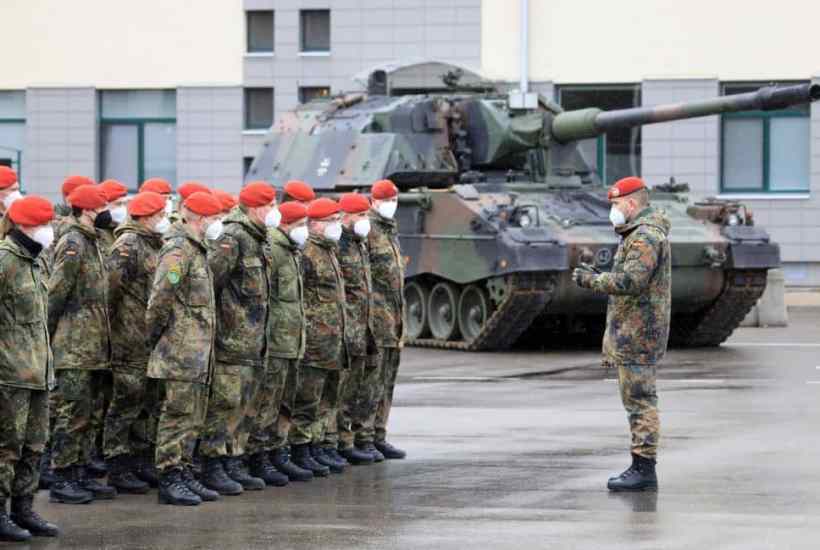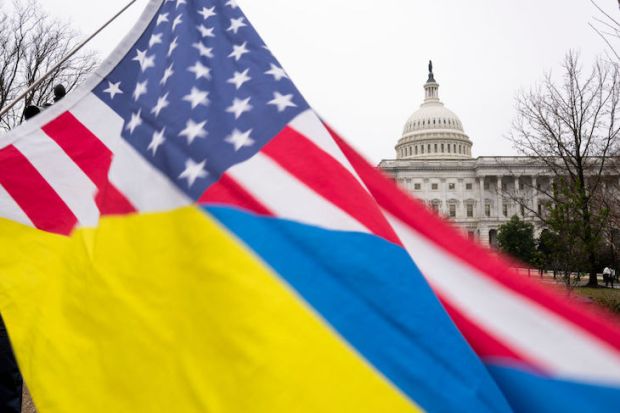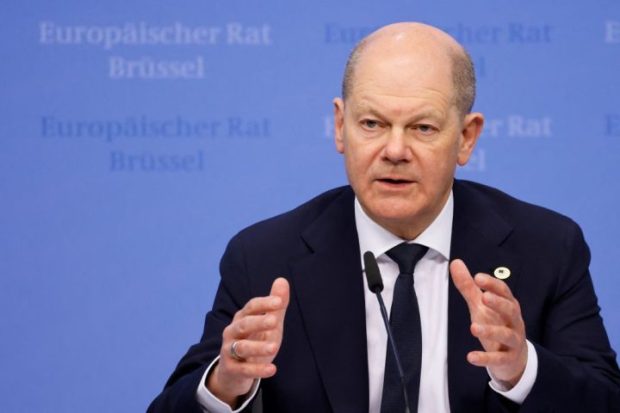The reluctance of chancellor Olaf Scholz to provide heavy weapons to Ukraine is now coming under increasing fire from abroad and within Germany itself.
Prominent politicians from the liberal FDP and the Greens, the coalition partners of Scholz’s Social Democrats in Berlin, have criticised the chancellor for his lack of leadership, and complain that Germany is lagging behind other major western powers in supplying weapons.
Marie-Agnes Strack-Zimmermann, the flamboyant chairwoman of the defence committee in the German parliament, hit out at the chancellor’s ‘deafening silence’ on the subject. German media have claimed that a list of available military equipment offered by the German defence industry had been cut back by the chancellor, removing all heavy weapon systems, such as Leopard 2 main battle tanks, Marder infantry fighting vehicles and artillery systems, before it was forwarded to the Ukrainians at the end of March.
A long awaited press statement by Scholz on 19 April did little to assuage his critics. His somewhat nebulous pronouncement that Germany would provide Ukraine with ‘air defence apparatuses’ and ‘things that can be used in an artillery engagement’ left most German security and defence policy experts scratching their heads. Woefully short on specifics and detail, Scholz nonetheless indicated that Germany would now go beyond supplying light infantry anti-tank and air-defence weapons as it had done so far, and that Ukraine could order weapons directly from German arms manufactures with the German government covering the cost of the purchases. Whether this would also include heavy weapons such as the Marder was left unclear.
From the beginning Scholz’s hesitant and obtuse communication strategy has made the chancellor’s decision-making opaque. Scholz is a taciturn politician, who despises showy rhetoric and political symbolism, and often remains invisible in the political debate. Behind closed doors, the chancellor – who has called his critics ‘little boys and girls’ who think a quick Google search is strategic expertise – also dismissed a recent visit by Boris Johnson to Kyiv as little more than a publicity stunt.
Over the last few days though his weapons policy has become somewhat clearer. According to German media reports, the ministry of defence is preparing to ship 120mm mortar systems, counter-battery radars and jamming systems. The defence minister Christine Lambrecht announced that the Bundeswehr would provide 155mm shells and train Ukrainian artillery crews in Germany, instructing them how to operate the Panzerhaubitze-2000, a German-made self-propelled gun the Netherlands had offered to Ukraine.
Berlin would also supply Slovenia with Marder and Fuchs armoured personnel carriers in exchange for Slovenian M84 tanks (a variant of the Soviet-made T-72) being sent to Ukraine.
Scholz had repeatedly stressed that it was not acceptable for Germany to ‘go it alone’ by sending heavy weaponry to Ukraine. Yet Germany still remains an outlier on this front. While the United States, the United Kingdom, France, Belgium, Canada, and the Netherlands have all announced the shipment of heavy artillery and air defence systems to Ukraine from their own arsenals, Germany has not.
Overall, an international strategy on weapons is emerging though. Western countries are focusing on supplying Ukraine with artillery systems like howitzers, ammunition, and training. Eastern European Nato countries, such as Poland, Slovenia, and the Czech Republic, on the other hand, are delivering Soviet-era tanks and will now receive western models in return. The advantage of this is that Ukrainian soldiers receive tanks they are already familiar with and have functioning logistics for. Supplying Ukraine with mothballed Leopard 1 tanks held in German industry depots, on the other hand, was scuppered due to a lack of available ammunition and the refusal of Nato countries still operating the tank, like Turkey and Greece to supply their own stock.
Practical issues aside, there remains both a military and political dimension to Germany’s relative restraint in supplying weapons to Ukraine.
After 20 years of underfunding and cutbacks the Bundeswehr is struggling to maintain operational readiness in the face of increased deterrence commitments, and has little equipment to spare. The German army, for example, is woefully short on artillery. Of the much-vaunted Panzerhaubitze-2000, hailed as the world’s most modern artillery system, it has a grand total of 108. These active units are already committed by Germany to Nato’s eastern flank, for example in Lithuania, or are needed for training purposes and to support Germany’s contribution to Nato’s Very High Readiness Joint Task Force.
Some of these units also have to be used for spare parts in order to keep others running. If Russia were to expand its war of aggression against the Baltics, these German artillery systems would be at the tip of Nato’s spear in Eastern Europe. Germany, in short, has precious little left to send, or else it would undermine its own ability to defend Nato territory in the case of an attack.
The political dimension, on the other hand, is down to the SPD and its history of pacifism and Ostpolitikduring the Cold War, a legacy that threatens to derail the foreign policy reset Scholz announced to much international acclaim on 27 February. Of the three parties in government, the SPD is struggling the most to intellectually adapt to the war in Ukraine and to fully endorse a political strategy that aims to defeat Russia militarily.
Some in the chancellery, such as Scholz’s foreign and security policy advisor Jens Plötner, still seem reluctant to see Russia as an enemy. Many in the party also still refuse to acknowledge the SPD’s culpability in cosying up to the kleptocratic dictatorship of Putin for decades, and the corrosive influence of Russian business interests and the Gazprom corporation in SPD-governed states.
There have been ugly Twitter spats between the former SPD-chairman and ex-foreign minister Sigmar Gabriel and the Ukrainian ambassador in Berlin. And Kyiv has effectively said the German president Frank-Walter Steinmeier is persona non grata in Ukraine.
Ralf Stegner, a prominent SPD politician of the left wing of the party, recently said on German television that sending heavy weapons to Ukraine was essentially pointless, because the country had no chance of winning the conflict. Stegner, a backbencher and something of a political has-been, does not represent the party as a whole, but his defeatism is prevalent among many of the German left, who would rather end the war on Russian terms than involve Germany deeper in the conflict.
For now, Olaf Scholz seems reluctant to further challenge the pacifist wing of his own party, which is already grumbling about a €100 billion special investment fund for the Bundeswehr. He also seems to genuinely fear a potential military escalation of the conflict in Ukraine and even the use of nuclear weapons by Russia. The argument that the presence of German Leopard 1 or Marder tanks in Ukraine would risk a nuclear escalation, however, but not Slovenian or Czech ones is not militarily or strategically logical. Instead it rather seems like political cover for German inaction.
The restraint which Olaf Scholz presents as prudent caution is unlikely to quell the negative backlash in global public opinion. Germany’s dithering on delivering weapons and embargoing Russian oil and gas is seen as an abject moral failure across the West. What Scholz seems to have forgotten is that politics is also about symbols and narratives. And here the chancellor, like much of his army, is looking pretty bare.
Got something to add? Join the discussion and comment below.
Get 10 issues for just $10
Subscribe to The Spectator Australia today for the next 10 magazine issues, plus full online access, for just $10.



















Comments
Don't miss out
Join the conversation with other Spectator Australia readers. Subscribe to leave a comment.
SUBSCRIBEAlready a subscriber? Log in